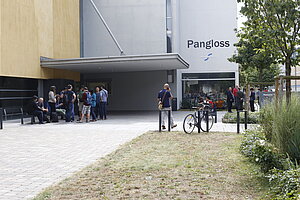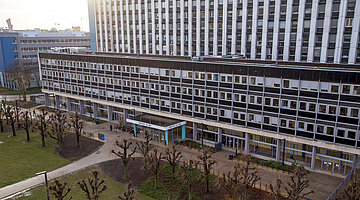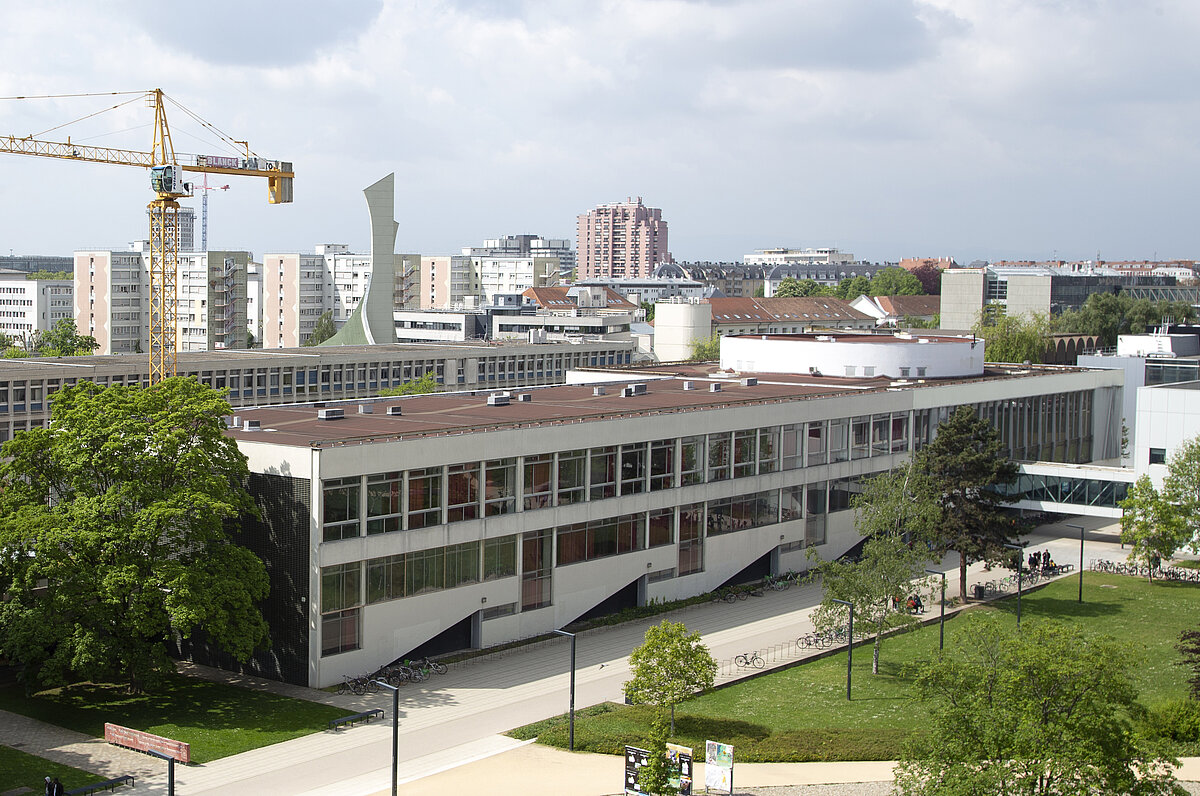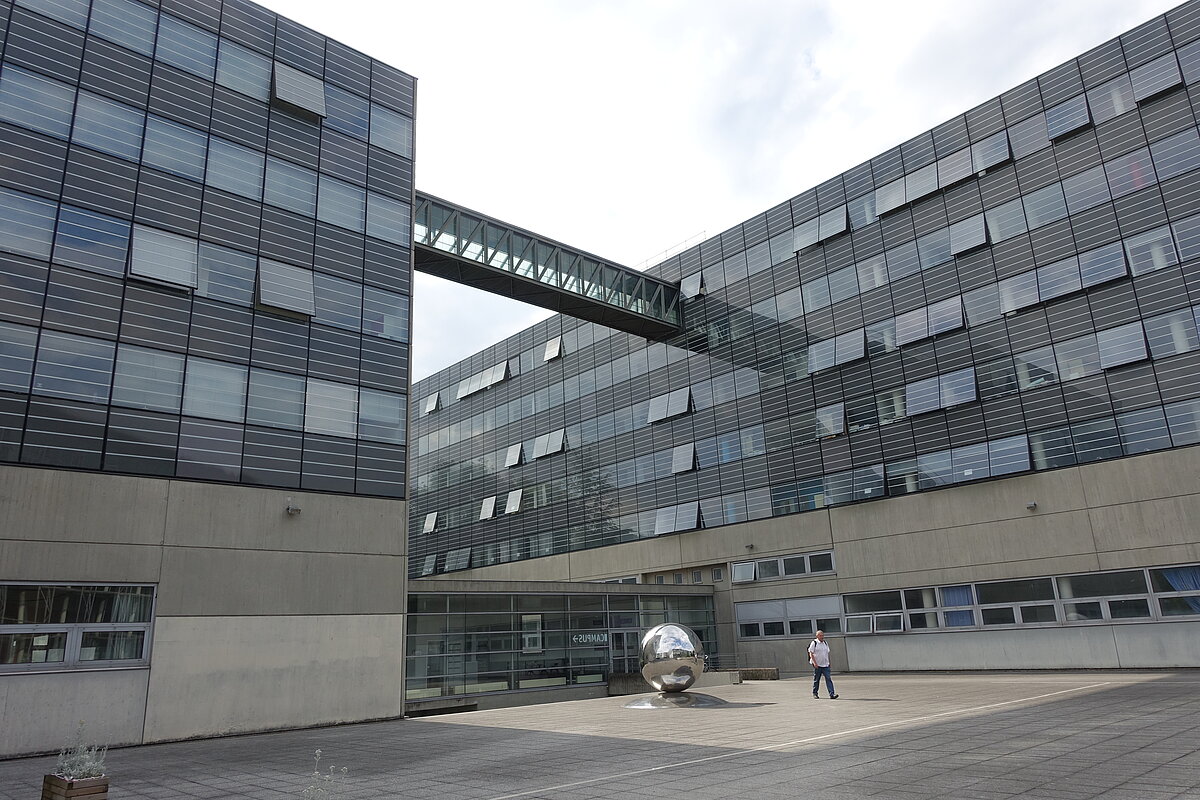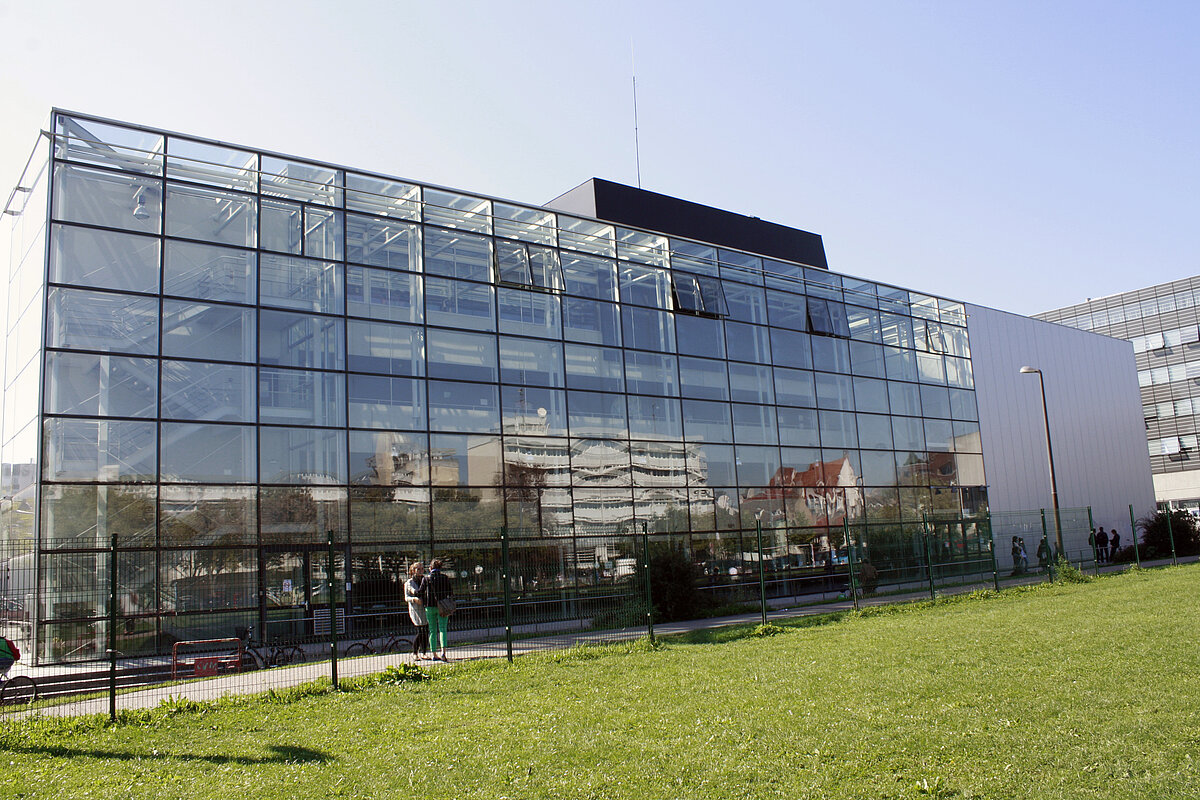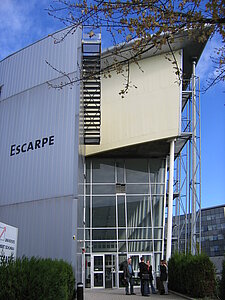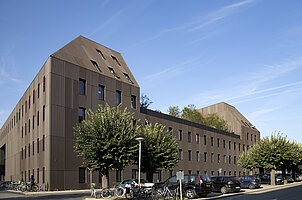![[Translate to English:] [Translate to English:]](/fileadmin/user_upload/Illustrations/headers/bandeau-header_TourCampus.png)
Campus Tour
Pangloss
Pangloss means "the one who speaks all languages." It is a symbol of linguistic diversity. Pangloss was built in 2000 to house the University of Strasbourg's Languages and Communication department, the Institut International d'Études Françaises (IIEF), the Institut de Traduction et d'Interprétariat-Relations Internationales (ITI-RI) and the Service de Ressources et d'Autoformation en Langues Etrangères (SPIRAL).
Institut Le Bel
Originally part of the Louis-Pasteur University, the Institut Le Bel was named after the chemist Joseph-Achille Le Bel, who researched stereochemistry and chirality, continuing the work begun by Louis Pasteur. Pasteur had discovered chirality by studying tartaric acid in wine barrels.
Patio, Portique and Atrium
The Patio, Portique and Atrium take their names from architectural features. The Patio provides a central open space at the heart of the building; the horizontal walkway between the two buildings gives the Portico its name; and the entrance to the Atrium consists of a long, glazed gallery running the length of the façade.
